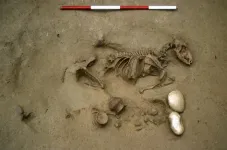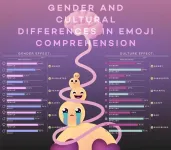(Press-News.org) EMBARGOED FOR RELEASE UNTIL 4 P.M. ET, WEDNESDAY, FEBRUARY 14, 2024
MINNEAPOLIS – Indigenous people may be more likely to have a stroke than non-Indigenous people, according to a systematic review that looked at populations around the world. The review is published in the February 14, 2024, online issue of Neurology®, the medical journal of the American Academy of Neurology.
Researchers looked at countries with a very high Human Development Index, which measures average achievements in three areas: health, knowledge and standard of living.
“Disparities are especially evident in countries where high average quality of life and long life expectancies are often not mirrored in Indigenous populations,” said study author Anna H. Balabanski, MBBS, PhD, of Monash University in Melbourne, Australia. “These disparities may reflect inequitable access to resources to prevent and manage stroke.”
The systematic review involved 24 studies across seven countries. The countries were Australia, Canada, New Zealand, Norway, Singapore, Sweden and the United States.
Researchers found that Indigenous people were more likely to have a stroke than those who were not Indigenous across six of the seven countries.
In Australia, Aboriginal Australians and Torres Strait Islander people were 70% more likely to more than three times more likely to have a stroke than non-Indigenous people. Aboriginal Australians and Torres Strait Islander people under the age of 55 were more than four times to more than 13 times more likely to have a stroke than non-Indigenous people.
In Canada, Métis people were 40% more likely to have a stroke than non-Indigenous people.
In Norway and Sweden, Sámi people were 8% more likely to more than twice as likely to have a stroke than non-Indigenous people.
In Singapore, Malay people were 70-90% more likely to have a stroke compared to non-Indigenous populations.
In the United States, American Indians were 20% more likely to have a stroke than their non-Indigenous counterparts.
In New Zealand, researchers found that Māori people were statistically more likely to have a stroke than non-Indigenous people only in a single study from 2002-2003.
“This process really highlighted the need for more and better research on stroke in Indigenous peoples,” said Balabanski. “For example, there were no studies meeting our criteria from South America, the Middle East or Russia. In addition, future studies should be designed and conducted with oversight by Indigenous peoples to strengthen research efforts and improve outcomes.”
This review was undertaken with the oversight of a newly formed International Indigenous Advisory Board consisting of Indigenous researchers from around the world.
Learn more about stroke at BrainandLife.org, home of the American Academy of Neurology’s free patient and caregiver magazine focused on the intersection of neurologic disease and brain health. Follow Brain & Life® on Facebook, X and Instagram.
When posting to social media channels about this research, we encourage you to use the hashtags #Neurology and #AANscience.
The American Academy of Neurology is the world’s largest association of neurologists and neuroscience professionals, with over 40,000 members. The AAN is dedicated to promoting the highest quality patient-centered neurologic care. A neurologist is a doctor with specialized training in diagnosing, treating and managing disorders of the brain and nervous system such as Alzheimer’s disease, stroke, migraine, multiple sclerosis, concussion, Parkinson’s disease and epilepsy.
For more information about the American Academy of Neurology, visit AAN.com or find us on Facebook, X, Instagram, LinkedIn
END
New review finds Indigenous people more likely to have a stroke
2024-02-14
ELSE PRESS RELEASES FROM THIS DATE:
UC Irvine-led research team creates novel rabies viral vectors for neural circuit mapping
2024-02-14
Irvine, Calif., Feb. 14, 2024 — A research team led by the University of California, Irvine has created 20 new recombinant rabies viral vectors for neural circuit mapping that offer a range of significant advantages over existing tools, including the ability to detect microstructural changes in models of aging and Alzheimer’s disease brain neurons.
The study published today online in the journal Molecular Psychiatry, introduced proof-of-concept data demonstrating the power of these new vectors, which express a range of improved ...
Broad Institute 2024 Media Boot Camp
2024-02-14
The Broad Institute of MIT and Harvard is now accepting applications for its 2024 Media Boot Camp.
This annual program connects health/science journalists and editors with faculty from the Broad Institute, Massachusetts Institute of Technology, Harvard University, and Harvard’s teaching hospitals for a two-day event exploring the latest advances in genomics and biomedicine. Journalists will explore possible future storylines, gain fundamental background knowledge, and build relationships with researchers. The program format ...
MEDIA ADVISORY: Mount Sinai doctors to present new research at 2024 SMFM Annual Pregnancy Meeting
2024-02-14
(New York, NY – February 9, 2024) – High-risk pregnancy specialists from the Mount Sinai Health System are presenting research at the Annual Pregnancy Meeting of the Society for Maternal-Fetal Medicine (SMFM) in Fort Washington, MD from February 10-14. Mount Sinai experts are available for interview about their research findings, and can also provide commentary on other women’s health topics, breaking news, and studies.
PRESENTATIONS and POSTER SESSIONS
(*All abstracts are under embargo until the below listed times*)
Sunday, February 11, 2024
FGR prevention: Is there a role for aspirin, heparin, ...
Significantly fewer births on weekends and holidays than weekdays, data analysis of over 21 million births from 1979-2018 in Japan shows
2024-02-14
Significantly more babies were born on a weekday instead of weekend day or holiday, reveals a large-scale analysis of 21 million births in Japan over almost four decades published February 14, 2024 in the open-access journal PLOS ONE by Miho Sassa from the University of Tokyo, Japan, and colleagues.
Medical resources are generally stretched during holidays (including weekends) due to factors like staffing and hospital policies. This may amplify holiday effects: disparities and variations of health outcomes between holidays and weekdays. Dr. Sassa and colleagues studied this holiday effect with a focus on birth, especially high-risk births as measured by babies born preterm ...
Vittrup Man crossed over from forager to farmer before being sacrificed in Denmark
2024-02-14
Vittrup Man was born along the Scandinavian coast before moving to Denmark, where he was later sacrificed, according to a study published February 14, 2024 in the open-access journal PLOS ONE by Anders Fischer of the University of Gothenburg, Sweden and colleagues.
Vittrup Man is the nickname of a Stone Age skeleton recovered from a peat bog in Northwest Denmark, dating to between 3300-3100 BC. The fragmented nature of the remains, including a smashed skull, indicate that he was killed in a ritualistic sacrifice, a common practice in this region at this time. After a DNA study found Vittrup Man’s genetic ...
Some Pre-Roman humans were buried with dogs, horses and other animals
2024-02-14
Some people from an ancient community in what is now northern Italy were interred with animals and animal parts from species such as dogs, horses and pigs. The reasons remain mysterious, but might indicate an enduring companion relationship between these humans and animals, or religious sacrificial practices, according to a study published February 14, 2023 in the open-access journal PLOS ONE by Zita Laffranchi from the University of Bern, Stefania Zingale from the Institute for Mummy Studies, Eurac Research Bozen, ...
Reported marital harmony—or conflict—accounts for nearly ten percent of the variation in mental health self-assessments in a broad study of Australian adults
2024-02-14
Australian adults who report a good relationship that meets their original expectations tend to score higher in mental health, while adults who report loving their spouse but wished they had never entered the relationship and note relationship problems tend to score significantly lower in mental health, according to a survey of almost 7000 Australian adults published February 14, 2024 in the open-access journal PLOS ONE by Bernard Kwadwo Yeboah Asiamah-Asare and colleagues.
Many recent studies have examined the possible social determinants of mental health. In this study, Yeboah Asiamah-Asare and colleagues looked specifically at how one’s ...
Just a few sites of exceptional fossil preservation may significantly distort the phylogenetic record for birds, scaly reptiles and dinosaurs
2024-02-14
Just a few sites of exceptional fossil preservation may significantly distort the phylogenetic record for birds, scaly reptiles and dinosaurs
###
Article URL: https://journals.plos.org/plosone/article?id=10.1371/journal.pone.0297637
Article Title: Quantifying the effects of exceptional fossil preservation on the global availability of phylogenetic data in deep time
Author Countries: USA
Funding: CHW: Richard Estes Memorial Award (No grant number); Society of Vertebrate Paleontology; www.vertpaleo.org; NO - CHW: Theodore Roosevelt Memorial Grant (No grant number); American Museum of Natural History; www.amnh.org; NO - CHW: EAR-PF 2305564; ...
Emojis are differently interpreted depending on gender, culture, and age of viewer
2024-02-14
Gender, culture, and age all appear to play a role in how emojis are interpreted, according to a study published February 14, 2024 in the open-access journal PLOS ONE by Yihua Chen, Xingchen Yang and colleagues from the University of Nottingham, UK.
Stylized images of faces expressing different emotions, emojis can add both emotional nuance as well as potential ambiguity to electronic messages.
To understand how gender, age, and culture may influence emoji interpretation, Chen, Yang and colleagues recruited a group of 253 Chinese and 270 UK adults (51 percent women and 49 percent ...
Global health photographers navigate murky ethical waters for clients
2024-02-14
Global health photography is often caught between photojournalistic intentions of accurately reflect local communities, and marketing directives to create attention-grabbing imagery, according to a study published February 14, 2024 in the open-access journal PLOS Global Public Health by Arsenii Alenichev from Oxford Population Health, the University of Oxford, United Kingdom, and colleagues. Standing at such representational crossroads, photographers are forced to engage with numerous—and often unresolvable — ethical and practical dilemmas.
Photographers ...





